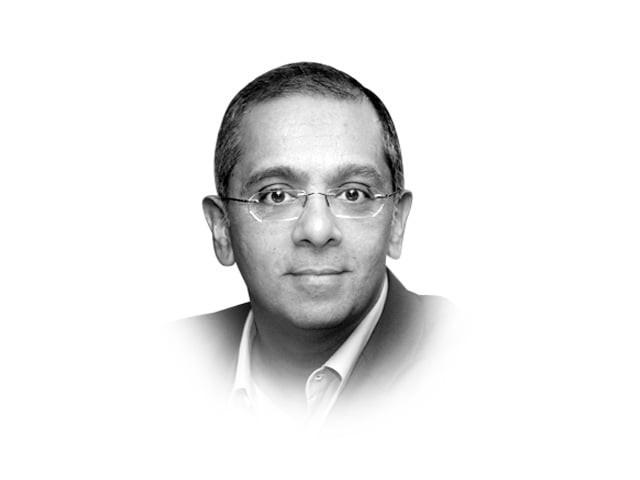Remembering Neutra’s Embassy
The old US Consulate Building is one of the few buildings by an accomplished master of the late Modern Movement.

Remembering Neutra’s Embassy
The US Consulate Building in Karachi was originally conceived as the US Embassy in Pakistan at a time when Karachi was the capital. The embassy was part of an extensive programme of construction of diplomatic facilities by the US State Department, which started immediately after the Second World War. Diplomatic missions throughout the war-ravaged parts of Europe needed to be rebuilt. With the decline of colonial powers, numerous new nations came into being. In fact, between 1947 and 1964, nearly 50 new nations joined the world community. In the increasingly contentious environment of the Cold War, the embassy building was seen as an important way for the United States to counterbalance Soviet influence in the Third World. As one of the ring of countries that encircled the Soviet Union, Pakistan was considered to be particularly important.
The new embassy also replaced grossly inadequate facilities occupied by the US Mission in Karachi. In 1947, the US Embassy occupied “a rundown office located a flight of steps above a garage and an automobile shop.” In 1954, US Representative Prince H Preston Jr, on an investigative tour of Pakistan, was so appalled by the conditions of the existing US Embassy that he called for a new purpose-built facility.
In 1955, the US State Department commissioned Richard J Neutra to design a new embassy in Karachi. Neutra’s appointment was part of an ambitious programme of architectural commissions to renowned architects, which included embassies by Walter Gropius in Athens, Edward Durrell Stone in New Delhi, Marcel Breuer in The Hague, Josep Lluis Sert in Baghdad and Eero Saarinen in London. Referring to these other designs as “just pretty building”, Neutra characterised his own scheme as “stripped for action.” Neutra’s proposal for the US Embassy in Karachi consisted of a long unadorned, subtly curved, rectangular slab raised on columns with an open glazed ground floor. Unequally dividing the façade was an oversized, cantilevered porte cochere that served as a welcoming entrance to the embassy. Set relatively close to the road and separated only by a steel picket fence, the embassy was designed as a civic and public presence on Abdullah Haroon Road. The stark, slab building, reflective of 1950s International Style architecture, nevertheless responded to the hot Karachi climate in the design and detailing of the narrow horizontal, strip windows, the use of vertical adjustable louvres and the use of water in the landscaping. The new embassy building was designed to provide security against theft and fire, but terrorist attacks and suicide bombing were unheard of at the time and were not addressed in the design. According to former US ambassador David D Newsom, the watchmen at the embassy in Karachi routinely slept through the night, awakening themselves periodically “to rise up or cough at intervals so possible intruders knew of their presence.”
In 1960, the capital moved to Islamabad and the embassy was downgraded to a consulate. Many Karachiites who grew up in the 70s and 80s favourably remember the US Consulate and the many events and facilities hosted there. The American Center Library was a favourite haunt of readers and researchers, while the art exhibitions and film screenings were equally popular among local residents.
The substantive change in the security status of the US Consulate, and for that matter all US diplomatic facilities, came after the 1998 US Embassy bombings in Kenya and Tanzania. The first physical manifestation of the response to these attacks in Karachi was the encasing of the steel fence boundary in a foot thick concrete wall. Unfortunately, car bombings in front of the consulate in 2002 and 2006 proved that the enhanced security measures had been presciently considered and justifiably applied. Nevertheless, the net result of these precautions was that the public face of the United States retreated behind reinforced fortifications and security barriers. Instead of presenting a welcoming face promoting friendship and dialogue, most embassies today resemble fortified outposts in hostile lands. The new approach to the design of US diplomatic facilities reflects this thinking. Perhaps this is the inevitable consequence of the insecure world we live in. The new US Consulate in Karachi presents a similar security-first approach and has the ambience of a fortified power station.
The decommissioning of the old US Consulate raises questions about the future of this modern masterpiece and perhaps presents opportunities for promoting US-Pakistan relations. The building is one of the few public buildings by Richard J Neutra, an accomplished master of the late Modern Movement. As a fine example of the 1950s International Style, it is representative of the ferment and debate current at the time about the nature of architecture. The building is a part of world architectural heritage and particularly that of the United States and Pakistan. And as such must be preserved. Naturally, preservation of any unused building is difficult, unless some alternative use for it is identified. The old US Consulate presents many opportunities to be converted into a civic institution promoting art and culture. It could readily be adapted to serve as a museum or art gallery. It was designed and sited to be a public institution; it might finally be able to achieve that in its new role. The US government should consider gifting this important piece of architectural heritage to the citizens of Karachi and help to convert it to a function that will help strengthen the long and friendly ties between United States and Pakistan.
Perhaps it is fortunate that current US Consul General William J Martin is a native of California and would appreciate the legacy of Richard J Neutra, who lived and practiced in Los Angeles for over 50 years.
Published in The Express Tribune, February 28th, 2011.
















COMMENTS
Comments are moderated and generally will be posted if they are on-topic and not abusive.
For more information, please see our Comments FAQ